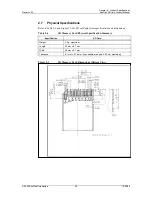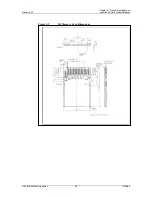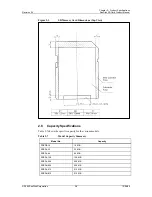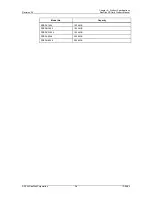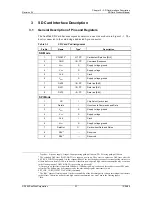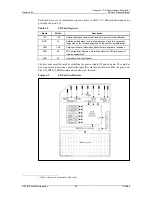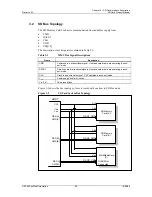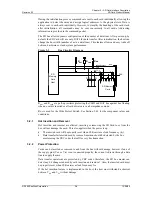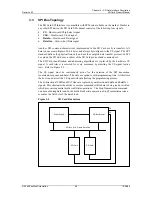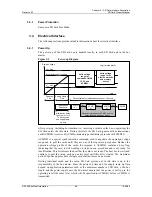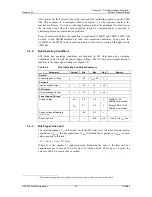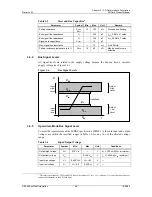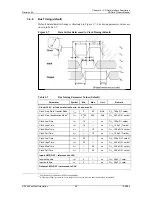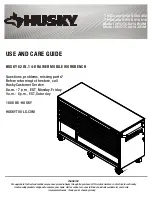
Chapter 3 – SD Card Interface Description
Revision 2.2
SD Card Product Manual
© 2004 SanDisk Corporation
3-1
12/08/04
3
SD Card Interface Description
3.1
General Description of Pins and Registers
The SanDisk SD Card has nine exposed contacts on one side as shown in Figure 3-1. The
host is connected to the card using a dedicated 9-pin connector.
Table 3-1
SD Card Pad Assignment
Pin No.
Name
Type
1
Description
SD Mode
1 CD/DAT3
2
I/O
3
, PP
Card detect/Data line [Bit 3]
2 CMD
I/O,
PP
Command/Response
3 V
SS1
S
Supply voltage ground
4 V
DD
S
Supply
voltage
5 CLK I
Clock
6 V
SS2
S
Supply voltage ground
7
DAT0
I/O, PP
Data line [Bit 0]
8
DAT1
I/O, PP
Data line [Bit 1]
9
DAT2
I/O, PP
Data line [Bit 2]
SPI Mode
1
CS
I
Chip Select (active low)
2
DataIn
I
Host-to-card Commands and Data
3 V
SS1
S
Supply voltage ground
4 V
DD
S
Supply
voltage
5 CLK I
Clock
6 V
SS2
S
Supply voltage ground
7
DataOut
O
Card-to-host Data and Status
8 RSV
4
---
Reserved
9 RSV
5
---
Reserved
1
Type Key: S=power supply; I=input; O=output using push-pull drivers; PP=I/O using push-pull drivers
2
The extended DAT lines (DAT1-DAT3) are input on power up. They start to operate as DAT lines after the
SET_BUS_WIDTH command. It is the responsibility of the host designer to connect external pullup resistors to
all data lines even if only DAT0 is to be used. Otherwise, non-expected high current consumption may occur due
to the floating inputs of DAT1 & DAT2 (in case they are not used).
3
After power up, this line is input with /-20Kohm) pull-up (can be used for card detection or SPI mode
selection). The pull-up may be disconnected by the user, during regular data transfer, with
SET_CLR_CARD_DETECT (ACMD42) command.
4
The ‘RSV’ pins are floating inputs. It is the responsibility of the host designer to connect external pullup resistors
to those lines. Otherwise non-expected high current consumption may occur due to the floating inputs.
5
Ibid.











